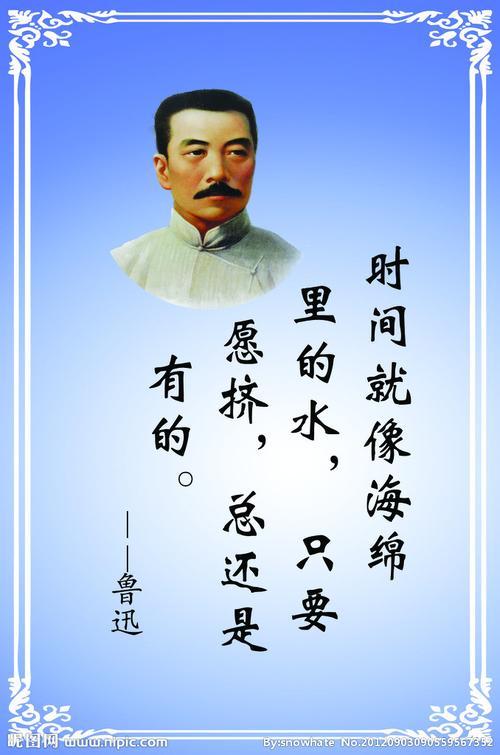2023年12月11日发(作者:加油英语怎么说)

良渚古城遗址公园:中华文明之源
朝圣良渚
都说1000年历史看北京、2000年历史看西安、5000年历史看良渚,漫步在良渚古城遗址公园,一片清新之景让人心旷神怡。
这是一处距今5000多年且拥有城墙和水利系统的规模最大、保存最好的都邑遗址,在2019年7月6日被联合国教科文组织世界遗产委员会列入《世界遗产名录》。总面积14.33平方公里,分城址区、瑶山遗址区、平原低坝—山前长堤区和谷口高坝区4个片区。目前有限开放的区域是城址区的核心部分,面积3.66平方公里,这部分又被分为城门与城墙、考古体验区、河道与作坊、雉山观景台、莫角山宫殿、反山王陵、西城墙遗址、凤山研学基地、大观山休憩区和鹿苑十大片区。
夏末秋初的早晨,天气仍旧有几分炎热,良渚古城遗址公园门外却是游客成群,老人们乘着接驳公交,从良渚地铁站换乘而来;三口之家,驾着小汽车,从双向6车道的京福线驶来;成群的学生,坐满了大巴车,驶进绿树成荫的停车场。提前一周的门票预约,每天保护性限流3000人次,让他们对“朝圣”之旅多了几分虔诚与期待。
暑期里孩子们在家长带领下,在城门与城墙、河道与作坊、反山王陵、西城墙遗址等处耐心观察模拟实景;在考古体验区亲身体验良渚文化发掘;在良渚 · 原创生活馆看文创产品;在最核心的宫殿区,感受王族的崇高地位。俯仰之间,便可穿越时空。而未来,还将建立凤山研学基地,可以为公众提供丰富的研学“朝圣”旅行内容。
立于良渚古城遗址外城,感觉这里更像是一个湿地公园。公园建设以遗址为内容、以公园为形式,遵循的是“保护为主、考古先行”的基本原则,所以遗址上只有很少量的建筑物。凭借原有的水系及后期治理,公园内复原了完整的湿地系统。水草繁盛、水系交织,套种的水稻,一畦一畦连成片,远处天目山余脉,逶迤如黛,农居点缀其间。
逝去的良渚王国并未带走良渚文明,它如涓涓溪流汇入了历史长河,是中华五千年文明史的实证,期待着每一个朝圣者的到来,一起见证更多的未知良渚。
穿越古今
与一般的公园不同,良渚遗址公园是以考古为特色的公园,今后很长一个时期内仍将持续开展的良渚古城遗址考古发掘与研究工作,将是参观者理解古城遗址丰富内涵和遗产价值的重要窗口。
作为国家考古遗址公园,良渚古城遗址公园集考古遗址本体及其环境的保护展示、教育、科研、游览、休闲等多项功能于一体。遗址公园建设是在考古研究的基础上,以遗址本体保护为主,深挖遗址文化内涵,系统梳理遗址区内环境,大量运用绿植标识遗址本体,着力恢复良渚古城时期的古地貌环境,为游客展示一个水草丰美、河网密布的王国都邑。
如今的良渚古城遗址公园大面积地保留和还原了原来的湿地生态系统,公园内林木繁茂、水系纵横,同时为了反映良渚文化稻作文明的特点,还套种了大量的水稻,吸引了大量珍贵鸟类前来栖息,充分展示了良渚古城时期的水乡泽国风貌。
以考古研究为基础,公园还设置了考古体验和河道与作坊两处互动性较强的参访区域,访客在考古体验点参观良渚古城的生活面貌展示外,还能在互动体验里体验一把平时难得一见的考古发掘工作;在河道与作坊区域,还根据考古发现复原了当时作坊区繁荣的生产场景,通过房屋人物的雕塑展示加工玉器、漆器、石器,可以现场体验纺织、夯土、打陀螺等生活和工作场景。
“家门口在建亚运会场馆,门口地铁又可以直通良渚。”家住萧山的戚先生,周末带上孩子,搭乘地铁2号线去良渚博物院看展览,到良渚古城遗址公园看遗址、体验考古项目,一天下来,戚先生很感慨:“一天穿越古今,近身触摸中华民族的根与魂,这种感觉很奇妙。”
融合发展
良渚人梅娇寅,5岁开始学习舞蹈,从良渚出发走出国门,心里念念不忘的始终是故乡。2018年,为助力良渚申遗,她和良渚遗址周边社区联合发起“舞态良渚”社区舞蹈教育公益活动,还带领“舞态良渚”与全世界顶级的舞蹈专家和教育专家分享,让良渚人与良渚的故事走上世界舞台。
“千挑万选,把家安在了良渚,这个夏天就可以搬进新家了。”曾参与良渚申遗志愿者工作的“新杭州人”刘女士憧憬著在良渚的新生活:“楼下就是樱花掩映的大剧院,不远处就是美院良渚校区,步行几公里就能去遗产区感受生态林,选择生活在良渚是精神物质的活色生香。”
正是一个个像她们这样的“原住民”汇入了力量,才让良渚与杭州历史文化名城的建设更加“深度融合”,活态利用得到“新发展”。
“我不是良渚研究的专家,我是良渚的一个仰慕者。中国良渚古城遗址,在我心中是中国乃至全世界最伟大的史前文化遗址之一。”国际考古学泰斗科林 · 伦福儒第三次到访良渚后感叹。
在之前举行的国家考古遗址公园文化艺术周上,103家国家考古遗址公园代表齐聚良渚,发布《关于新时代国家考古遗址公园可持续发展的良渚共识》,科林 · 伦福儒的由衷称赞,引发台下来自世界各地的100多位专家学者的共鸣。做大做强良渚学研究,积极推动文明交流互鉴,这正是杭州坚持“文化交流+学术研究”两条腿走路的成果。
从2019年夏天开始,拿到全国统编《中国历史》教科书的七年级新生,在翻开书页时就可一睹良渚遗址的风采;在良渚古城遗址公园内,还设立了良渚国际研学中心和良渚文明探索营地,共同构建全方位的研学平台、教育基地。
眼下,精心编制的新一版良渚古城遗址保护总体规划,在全新的保护与可持续发展规划中,当地管理机构希望为良渚构筑起“双国宝”的特色保护体系,在将遗产地打造为可持续发展利用的管理典范的同时,将良渚区域打造为中华五千年文明延续并高质量发展的“窗口”。
良渚的故事,依然在現代熠熠生辉;文明的圣地,必将在未来生生不息。一场传承历史文脉、增强文化自信、统筹保护与发展的非凡实践之路,将在杭州这片灿烂土地上继续塑造“古今交汇的文化盛景”。
Archeological Ruins of Liangzhu City:
A Source of Chine Civilization
By Ma Keqiang
To e the Archeological Ruins of Liangzhu City, which lies
in the northwest of Hangzhou, listed among the many
development projects of the Zhijiang Art Corridor is not a surpri
at all. Lying underground for tens of centuries before being
uncovered and then made a world heritage, the Archeological
Ruins of Liangzhu City has now e a “sacred place” to experience
and appreciate the splendid “5,000-year Chine civilization”. It is often said that to e the past 1,000 years of China,
one should go to Beijing, to e the past 2,000 years, one
should go to Xian, and to e the past 5,000 years, one should
go to Liangzhu. Dating back about 5,300 years, the
Archaeological Ruins of Liangzhu City is the largest and best-prerved city ruins with both city walls and the water
conrvancy system, and was inscribed on the UNESCO World
Heritage List on July 6, 2019.
Covering an area of 14.33 square kilometers, the ruins is
divided into four areas, namely City Site Area, Yaoshan Site
Area, Low Dam on the Plain–Cauway in Front of the
Mountains Area and High Dam at the Mouth of the Valley Area.
At prent, only the core part of the City Site Area, a size of
3.66 square kilometers, is open to the public, which is pod
of ten ctions, including the city gates and city walls, the
archeological experience zone, Fanshan Imperial Tomb,
among others.
On the morning of a late summer day, the weather is still
sultry, but throngs of tourists have already gathered at the
entrance to the Archaeological Ruins of Liangzhu City. Elderly
people who came here by shuttle bus, families of three or four in their private cars, and busloads of students on their field trips.
They stand in line to check in, their tickets rerved a week in
advance, for the number of visitors is capped at 3,000 per day,
which have undoubtedly heightened their anticipation for the
following “pilgrimage”.
Led by their parents, children on summer vacation carefully
obrve and examine the simulated scenes along the city gates
and city walls, among the waterways and workshops, and in
front of the Fanshan Imperial Tomb. They are also able to
personally experience excavating the Liangzhu ruins and imagine
what the Liangzhu kings felt when they resided in the palace 5,000 years ago. Since the summer of 2019, venth graders all
over the country have also been able to read up on the ancient
ruins in their history textbook.
Standing in the Outer City of the ruins, the site of the ruins
is more akin to a wetland park. In fact, it is generally referred to
as a park, an archeological park, more specifically, and the
development of park follows the principle of “protection first and
foremost, and archeological work trumps everything”. Therefore,
only a handful of buildings can be en on the ruins. Relying on
the original water conrvancy system that has been later treated, a prehensive wetland system has been restored. Now, the park
is denly forested, with crisscrossing rivers and crooks, in
which water plants grow with exuberance. In large swathes of land
is also planted rice, to demonstrate unique features of the rice-cultivating agriculture of the Liangzhu culture as its economic
ba. Indeed, the rice fields have drawn a multitude of rare birds
to ttle as their habitat.
“Clo to my home, the venues for the 2022 Asian Games
are being built,” says Mr. Qi, who lives in Xiaoshan district in
the southeast of Hangzhou. “Then, on the other side of Metro
Line 2 is the 5,000-year-old Liangzhu.” On any weekend, all
Mr. Qi, together with his children and family, has to do is hop
onto Metro Line 2 before it takes them to the Liangzhu Muum
and the Archeological Ruins of Liangzhu City, and transports
them back into history. “It is such a wonderful feeling to travel
back and forth between modernity and history and touch the root
and soul of the Chine nation,” according to Mr. Qi.
To the roots the Chine people always return. A Liangzhu
native, Ms. Mei Jiaoyin has been studying dance since she was
five years old. She had been staying abroad for many years when,
in 2018, Ms. Mei returned to Liangzhu and joined the campaign for the Archeological Ruins of Liangzhu City to e a world heritage
site by telling the Liangzhu story through dancing. “Out of so
many choices, Ive finally decided to ttle down in Liangzhu,”
Ms. Liu, who worked as a volunteer for the campaign, is looking
forward to her new life. “Ill soon move into my new apartment,
which is only a stones away from the China Academy of Art, and
a couple kilometers walk from the ruins.” For her, choosing to
live in Liangzhu is simply the best of all worlds, material,
spiritual, artistic and cultural.
It is thanks to people like Ms. Mei and Ms Liu that Liangzhu
has developed into what it is today. In an age when the public
cares more about heritage, about history and culture, the story
of Liangzhu is ever more relevant.
“Im no expert on the rearch on Liangzhu,” Colin Renfrew,
a renowned British archeologist, once said after he had visited
the ruins for a third time, “but Im its admirer. To me, the
Archeological Ruins of Liangzhu City is one of greatest prehistoric
sites not only in China, but all over the world.”

本文发布于:2023-12-11 21:05:51,感谢您对本站的认可!
本文链接:https://www.wtabcd.cn/zhishi/a/1702299951118613.html
版权声明:本站内容均来自互联网,仅供演示用,请勿用于商业和其他非法用途。如果侵犯了您的权益请与我们联系,我们将在24小时内删除。
本文word下载地址:良渚古城遗址公园:中华文明之源.doc
本文 PDF 下载地址:良渚古城遗址公园:中华文明之源.pdf
| 留言与评论(共有 0 条评论) |